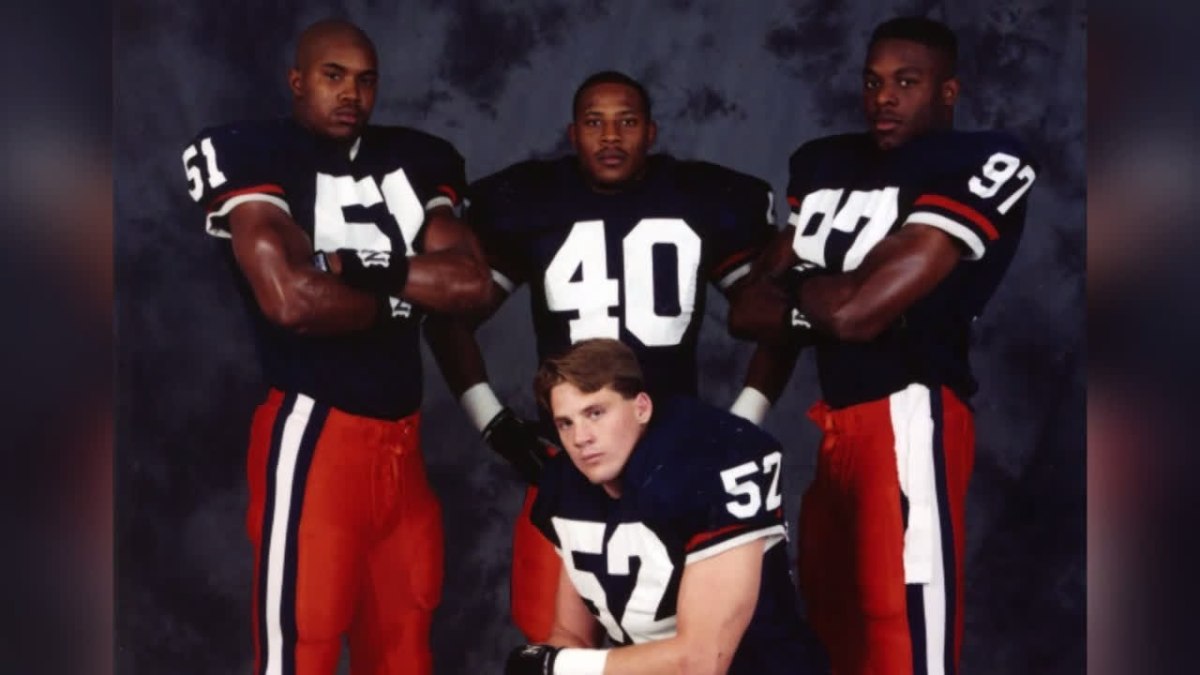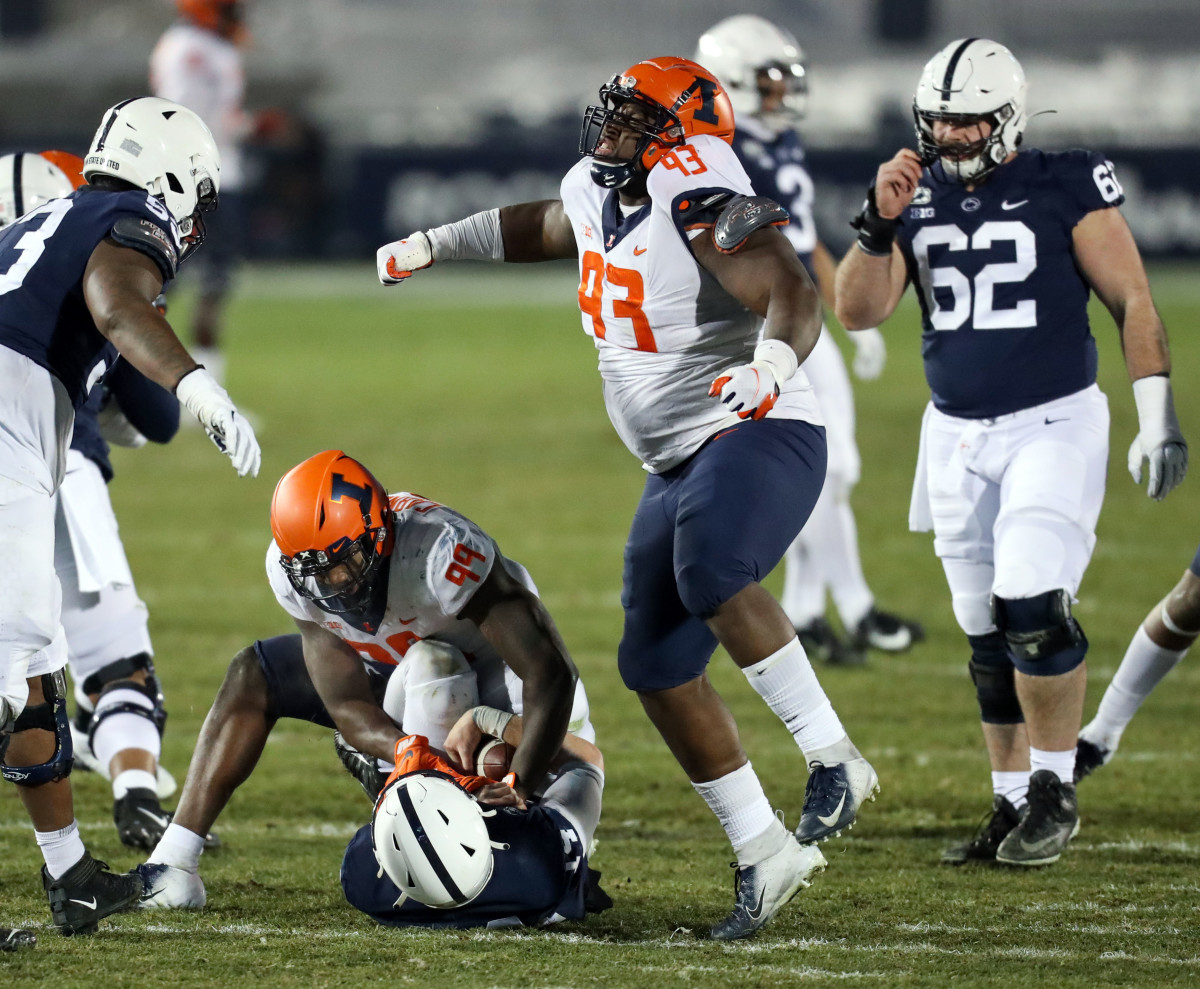Analysis: Bret Bielema Still Comfortable With 3-4 Defensive Look For Illini
CHAMPAIGN, Ill. -- The beginning of the Bret Bielema era of University of Illinois football will always be remembered by his first national interview being on the side of the road from the driver seat of his car.
From that roadside interview with ESPN’s nationally acclaimed College Gameday pre-game show, Bielema made some early declarations of what the identity of Illini would like under his leadership.
A brief summary of what Bielema envisions for the program would include a 3-4 defensive formation (something Illinois hasn’t had since Bill Clinton was still in his first term as President), a version of the spread offense (something Bielema’s teams have never had) and and an in-state recruiting foothold (something that has eluded the last 10 Illini coaches going back beyond when Bielema, an Illinois native himself, was a player and chose Iowa over the home state Illini).
In an exclusive interview with Illini Now/Sports Illustrated, Bielema was given the opportunity to walk back some of those declarations after getting a chance to evaluate the ever evolving returnees on the roster and the hiring of all of the allotted 10 assistant coach spots for the upcoming 2021 season.
Bielema, while appreciating the leeway of not being held to a highway interview for ESPN’s flagship Saturday pre-game show, respectfully declined and said he felt comfortable with those comments.
“As a 51-year-old head coach of three different programs now, you learn to blend and do what you do best as a roster...can’t change what we’ve been but we can change what you’re going to be,” Bielema said. “For me, this comes from the evolution of college football and what I’ve seen from programs that I hold in high accord and how they’ve been able to transition success.”
Therefore, we're doing a three-part series on all three of those elements starting with his new vision for the defense.
“For me, this comes from the evolution of college football and what I’ve seen from programs that I hold in high accord and how they’ve been able to transition success.” - Illinois head coach Bret Bielema on why he's committed to a 3-man defensive front scheme
The three-man front, which Bielema said is “a blend” of different formations, may have different looks throughout a game but the new Illini coach described possible 3-4, 3-2-5 and 3-3 looks to account for the evolution of the run-pass option games of modern-day college football. However, it is important that none of Bielema’s knee-jerk base examples involved a traditional four-man front.

With defensive athletes being trained to have malleable skills at a younger age due to heavier emphasis on skill position matchups in space, a scheme switch is a more seamless transition than the last time Illinois made the 3-4 to 4-3 move when Ron Turner was hired in 1997. A principal point of this philosophical move will be recruiting. Pass rushers with speed but possibly not meeting the prototypical size may be given a different recruiting by this new Illinois coaching staff. In the early 1990s, Lou Tepper was able to effectively sign Simeon Rice, Dana Howard, Kevin Hardy, John Holecek were all listed as linebackers in the Illini’s 3-4 scheme despite Rice having five inches in height and nearly 30 more pounds on Howard, who would win the 1994 Butkus Award.
For example, the most recent 2021 verbal commitment for Illinois is consensus three-star Georgia prospect Dwayne Johnson - a 6-foot-4, 230-pound recruit, who is listed at outside linebacker. However, the programs on Johnson’s offer list are highlighted by Power Five Conference and elite Group of Five schools that all will be using an odd-man front (Illinois, Wisconsin, Arkansas, Kansas State and Cincinnati) in 2021. Illini fans should expect more linebacker athletes who provide more athletic versatility and length to the line-of-scrimmage, similarly to Johnson, to be recruited by Bielema’s Illini program.
💯% Committed‼️ 🟠🔵 💪🏽💪🏽💪🏽@IlliniFootball @Rivals @247Sports @ChadSimmons_ @Mansell247 @therealkwat @coachbenmiller @BretBielema @RecruitGeorgia @OreyFerrell pic.twitter.com/kHdRbr7ECu
— DJ Johnson (@DJSGHS4) January 19, 2021
“What I'm going to want to see is some flair, some twitch," Illinois outside linebackers coach Kevin Kane said. "Everybody is going say they want 6-foot-4 and 225 pounds out of high school and that's great. But what I'm looking at is their toughness, how high is their motor because if you find those types of kids, you can mold them into what you want them to be."
This evolution of what the Illini defense could look like in 2021 and beyond is interesting after evaluating nearly every scholarship player from last year’s defensive front is coming back for Bielema’s first season. Add in the idea that Illinois’ new duo of linebacker coaches (Andy Buh and Kane) currently have a roster consisting of just six scholarship players in their position group with two veterans (Khalan Tolson and Tarique Barnes) possibly being unavailable for whenever spring practices might be set to begin in a few months due to season-ending surgeries.
Therefore, everybody can expect the release of the 2021 Illinois spring football roster to be a critical moment in how this rebuild will begin because positional changes will likely be numerous as Illinois currently has 15 scholarship defensive line players scheduled to return. Isaiah Gay, who announced his return for one more season at Illinois on Jan. 12, could be a perfect candidate for a stand-up pass rusher position, imagine what Khalil Mack is to the Chicago Bears defense, in a scheme led by Bielema, defensive coordinator Ryan Walters and two other coaches (Buh and Kane) with previous college coordinator experience.
“It’s very exciting because I always wanted to showcase my speed more than anything," Gay said. "We all saw how strong I was and how well I can rush the passer. I wanted to be the main one coming off the edge and getting those big highlight plays, setting the edge, big sacks, just a playmaker on the edge."
Another example of a position change from traditional defensive end to stand-up, edge-rushing linebacker is Seth Coleman as a tall (6-foot-5), 230-pound pass rusher who finished the 2020 campaign with only 13 tackles in just eight games. By working inside out, highly acclaimed prospect Jer'Zhan Newton finished his freshman season with 23 tackles, 1.5 sacks, 1.5 tackles for loss and a fumble recovery and at 6-foot-2 and 275 pounds is the perfect body type for a 3-4 defensive end strong enough to set the edge in the run game but athletic enough to handle double-team blocks from a guard and a tackle.

Using opposite logic, former Illinois head coach and defensive play-caller Lovie Smith consistently spoke about 340-pound defensive tackle Calvin Avery finding himself unable to stay on the field for all three downs of a possession. Before the final two games of the 2020 season, the Dallas native never participated in 30 or more defensive snaps in any game for the last two years. The former consensus four-star prospect, who was recruited by Bielema’s Arkansas program in 2017, is the quintessential body type for a 3-4 nose tackle.
The final fascinating piece of this equation is the coaching staff itself. Bielema has assembled a defensive staff that includes three former defensive coordinators (Walters, Buh and Kane) but none of them have experience of calling defenses for a primary 3-4 scheme. However, all of those highly experienced coaches have recently worked in their background under defensive coaches who believe in an odd-man front. Walters spent six years (2013-19) under Barry Odom at Memphis and Missouri and after being fired at Missouri, Odom implemented a dime package of a 3-2-6 look in his first year as the defensive coordinator at Arkansas.
Kane, a Kansas City native, told local and statewide media this week has seen Kansas State used talent from his home area to implement a 3-3-5 look transitioned unique to the Big 12 Conference after they hired North Dakota head coach Chris Klieman.
Buh has been a defensive boss at Stanford, California, Nevada, Maryland and Rutgers and all of those schemes were based in a 4-3 look. However, the 47-year-old just finished a season as the linebackers coach at Arizona under Paul Rhoads’ 3-4 scheme. Rhoads was Bielema’s last defensive coordinator in college as the two men tried to formulate a transition to the 3-4 that was being perfected in its own division by Nick Saban's philosophy at Alabama and at LSU under former Wisconsin defensive coordinator Dave Arenda.
"I think one of the things that's attractive and exciting about this opportunity is you get to build something," Walters said.
